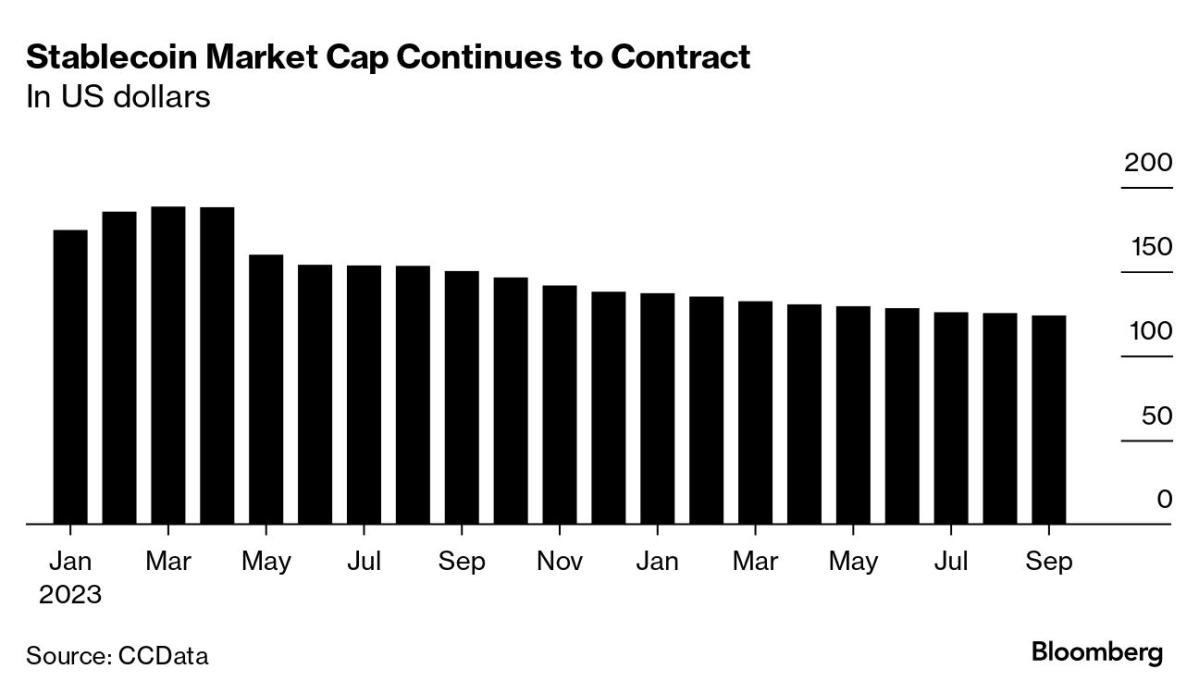
PayPal’s Stablecoin Fails to Halt Contraction in Digital-Asset Sector
PayPal’s recent entry into the stablecoin market has not been able to prevent the continued contraction of the digital-asset sector. Despite the initial excitement surrounding PayPal’s stablecoin launch, the industry’s overall market capitalization has seen a sharp decline, according to research conducted by CCData. The total market capitalization of stablecoins, which are digital currencies pegged to another asset class such as fiat, dropped to $123.8 billion as of September, the lowest level since August 2021. In December, the sector’s market capitalization stood at $137.9 billion.
The decline in stablecoin volumes traded on centralized exchanges such as Coinbase Global Inc. further demonstrates the contraction of the digital-asset sector. Trading volume for stablecoins fell by 28.4%, reaching $331 billion in September, representing the lowest monthly total since July 2020, as discovered by CCData. This decline in activity reflects the overall decrease in crypto market activity following numerous scandals and bankruptcies that plagued the sector in 2022.
Stablecoins are commonly used to facilitate trading between cryptocurrencies and provide a means to shield holdings from the volatility inherent in the crypto market. While many stablecoins, such as USD Coin and BUSD, have witnessed declines in their market capitalization, Tether (USDT), the sector leader, has increased its dominance. USDT now accounts for 67.3% of the total stablecoin market, amounting to $83.4 billion. This represents the highest percentage of market share for USDT since March 2021, according to CCData.
The introduction of PayPal’s stablecoin in August was hailed as a significant development for the adoption of digital tokens in the payments industry. However, the stablecoin’s impact has been limited, with a market capitalization of approximately $110 million, according to CoinGecko. This relatively small market cap indicates that PayPal’s stablecoin has not gained substantial traction within the industry.
The contraction in the digital-asset sector raises questions about the future growth and stability of cryptocurrencies. Despite the initial excitement surrounding the development and introduction of stablecoins, challenges persist in establishing stable and secure trading platforms for digital assets. The volatility and uncertainty in the crypto market have deterred many potential investors and users, hindering the widespread adoption and acceptance of cryptocurrencies as a viable means of payment.
It remains to be seen whether PayPal’s foray into the stablecoin market will ultimately drive the much-needed growth and stability in the digital-asset sector. As the industry continues to evolve and regulators work towards establishing a comprehensive framework for cryptocurrencies, market participants will need to navigate the challenges posed by market contractions, while striving to build trust and confidence in this emerging asset class.






